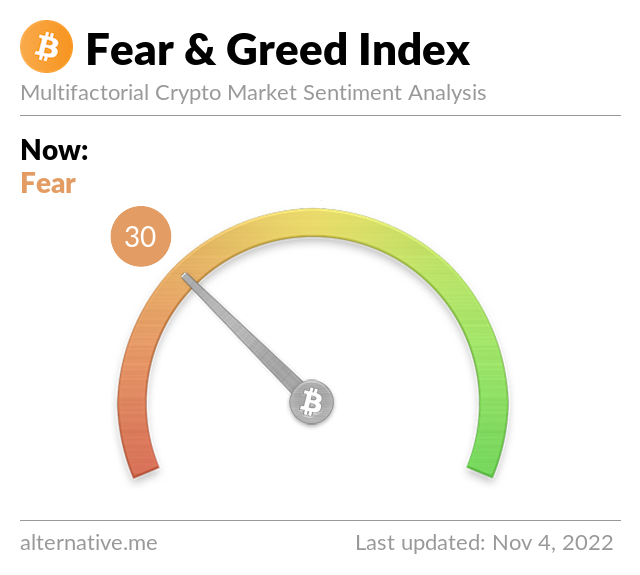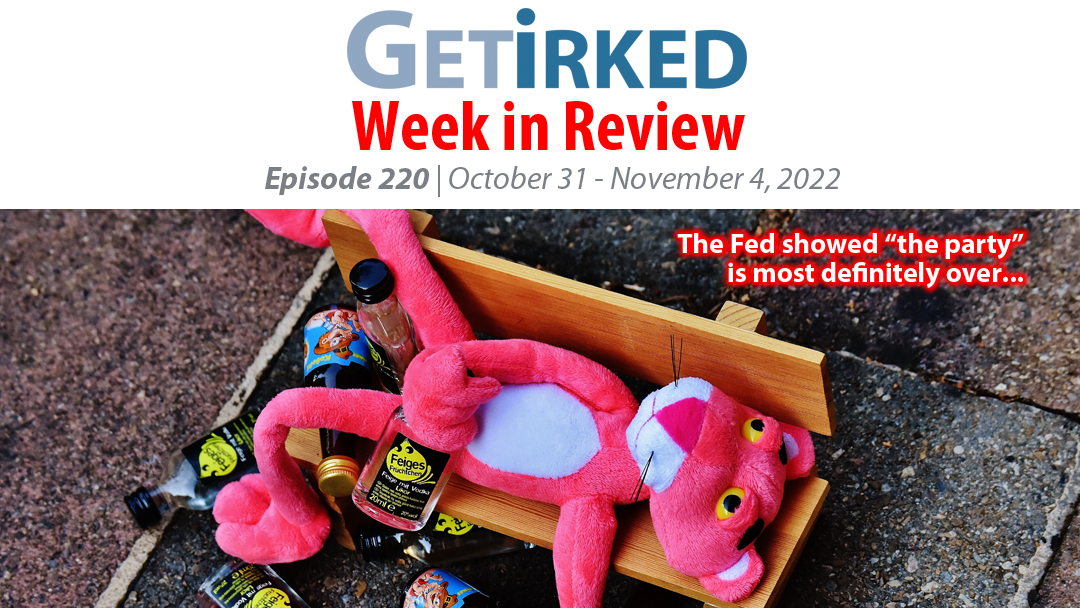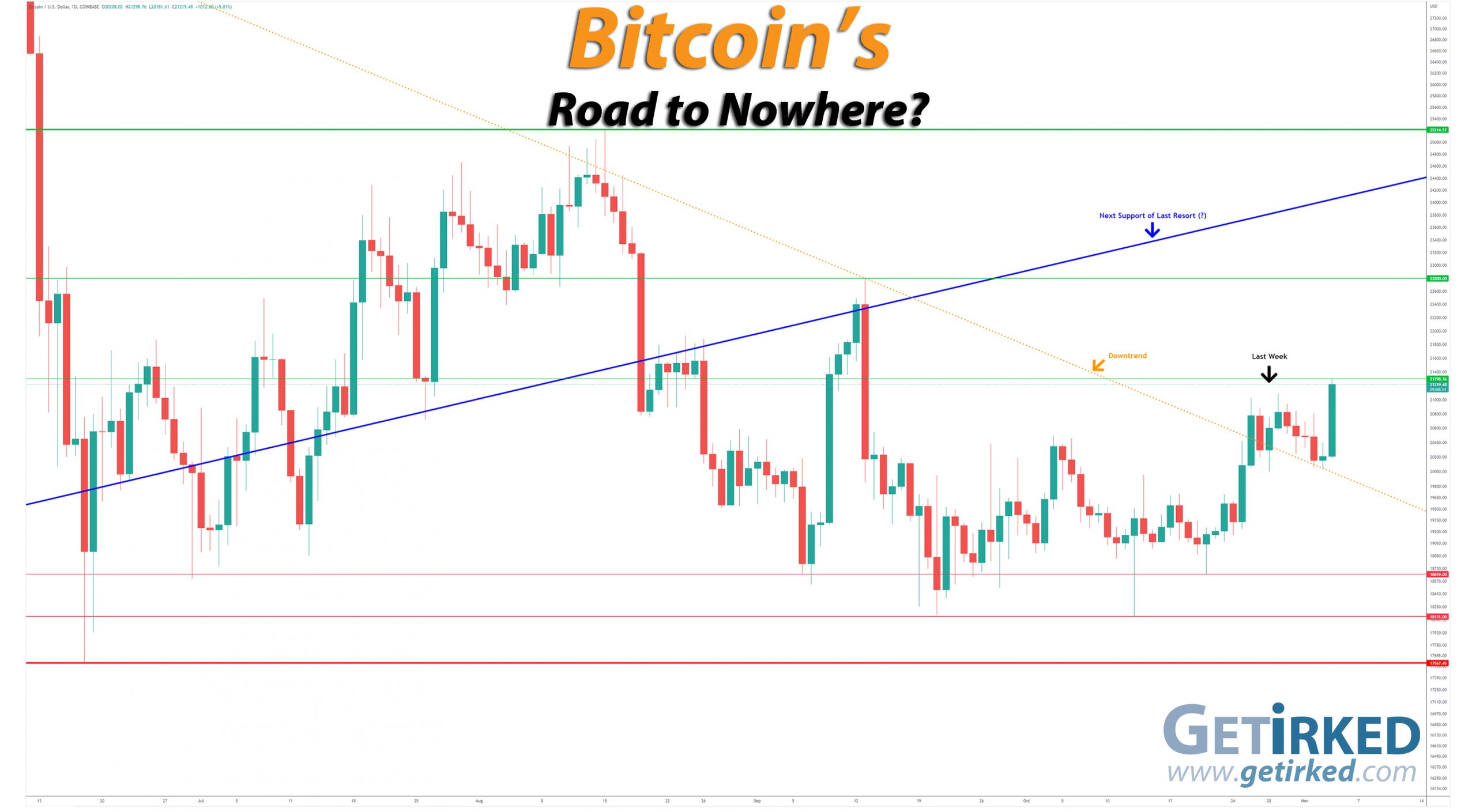Summing Up The Week
As has become the norm during a week with a Federal Reserve meeting, the markets traded relatively flat to down before Wednesday’s Fed announcement of its new interest rate hike and plans for the future of its fight against inflation.
Naturally, the remainder of the week’s movement depended entirely on Fed Chairman Jerome Powell’s comments about the Fed’s next steps, which, as you might expect, caused some extreme volatility in the markets.
Let’s take a look at the news that moved the markets this week…
Market News
Homebuilders warn 2023 could be worse than 2022
On Monday, CEOs from many homebuilder companies warned that the housing market is cooling off at an alarming rate with some believing 2023 could be even worse than 2022, reported CNBC. The combination of extremely-fast rising mortgage rates, inflation, and high housing prices have caused many potential homebuyers to stay the course and wait.
“It is definitely a hard landing for housing,” said Gene Myers, CEO of Thrive Homebuilders in Denver, Colorado. “Any hope of a soft landing really evaporated last spring, when it became so clear that our customers who are accustomed to such low mortgage rates just were going to go on strike.”
Even those in the higher income brackets seem to have lost their appetites to purchase new primary or secondary homes. “When we look at our move-up and our resort lifestyle buyers they absolutely can still afford to buy, but emotionally, you need to have the confidence,” said Sheryl Palmer, CEO of Arizona homebuilder Taylor Morrison in an interview on Mad Money with Jim Cramer. “Even at today’s rates, both our FHA and conventional buyers have a great deal of room, but being able to afford it doesn’t mean they have the confidence, given everything that’s going on in the economy today.”
Jobs fly in September despite the Fed’s fight against inflation
On Tuesday, the Job Openings and Labor Turnover Survey (JOLTS) showed job openings surged 10.72 million, far above the estimate of 9.85 million made by FactSet, reported CNBC. While a strong job market is good for the overall economy, the Federal Reserve has repeatedly stated it wants to see the job market weaken as a sign the Fed’s fight against inflation is making progress.
September’s report shows that there are 1.9 job openeings for every available worker, and that the employment cost index, another key data point for the Fed, is increasing at an annual rate of around 5%.
Given this data came out one day before the Fed will announce its next interest rate hike and plans for the future, what started as a morning rally quickly leveled off.
Private payrolls rose 239K in October vs 195K expected
As if the looming Fed announcement in the afternoon was enough news on Wednesday, in the morning, ADP released figures showing private payrolls increased by 239,000 in October versus the 195,000 expected by Dow Jones economists, indicating that the job market is hot as ever, a potential negative indicator for the Fed’s fight against inflation, reported CNBC.
“This is a really strong number given the maturity of the economic recovery but the hiring was not broad-based,” said Nela Richardson, ADP’s Chief Economist. “Goods producers, which are sensitive to interest rates, are pulling back, and job changers are commanding smaller pay gains. While we’re seeing early signs of Fed-driven demand destruction, it’s affecting only certain sectors of the labor market.”
Fed hikes 0.75%, market doesn’t get hoped-for policy change
On Wednesday, the Federal Reserve did exactly what the market expected and raised the benchmark rate +0.75%, bringing it to 3.75%-4.00%, the highest the rate has been since 2008, reported CNBC. Due to comments in the Fed’s prepared statement suggesting that the Fed will continue to remain data-dependent regarding future rate hikes, the markets rallied initially as many bullish pundits believe that indicates the Fed has pivoted from its tightening cycle, before rolling over during Fed Chairman Jerome Powell’s press conference where he turned distinctly bearihs.
The new statement hinted at that policy change, saying when determining future hikes, the Fed “will take into account the cumulative tightening of monetary policy, the lags with which monetary policy affects economic activity and inflation, and economic and financial developments.” Economists are hoping this is the much-talked about “step-down” in policy that could see a rate increase of half a point at the December meeting and then a few smaller hikes in 2023.
During Powell’s press conference, he reiterated the need to remain hawkish as well as letting the markets know that real interest rates need to be positive (the benchmark rate needs to exceed the rate of inflation) which potentially means significant price hikes remain on the table.
October nonfarm jobs top 261K, far beating 205K estimate
On Friday, the Labor Department revealed nonfarm payrolls grew by an astounding 261,000 in October versus the much lower Dow Jones estimate for 205,000, reported CNBC. Good news for the economy and labor market continues to be bad news for inflation as the Federal Reserve will have to continue tightening to weaken growth in order to bring down the raging inflation rate.
“Job gains were fairly widespread, and overall wage gains are still too high,” said Senior Global Market Strategist Marvin Loh at State Street. “So, steady as she goes from a Fed perspective, but incrementally, there’s reason to have a little hope that we’re starting to see some of the froth come out of the [jobs] market.”
Pundits took some small solace in the fact that while the jobs number was better than expected, it represented the slowest pace of growth in job gains since December 2020.
Markets rose on Friday despite the jobs number which, when combined with Powell’s hawkish comments on Wednesday, likely indicates additional severe interest rate hikes as we head into the coming months.
Next Week’s Gameplan
Now that we know that the Fed is nowhere near done with its fight against inflation, the future looks bearish for the time being.
While it’s worth noting that there is often a market rally following midterm elections resulting in split government (a different party controlling Congress than the white house) and the seasonal “Santa Claus” rally which occurs in the days leading up to and preceding Christmas, I wouldn’t be the farm on these patterns.
Longtime readers may recall November-December 2018 where the S&P 500 sold off -20% within a matter of weeks. This selloff coincided with the last time that Jerome Powell was hawkish and raising rates on the market.
Accordingly, I will continue to beat my drum: have a plan for what to do if the market goes up tomorrow, and have a plan for what to do if the market goes down tomorrow.
Have a great week, everybody!
This Week in Play
Stay tuned for this week’s episodes of my two portfolios Investments in Play and Speculation in Play coming online later this weekend!
Crytpo Corner
Important Disclaimer
Get Irked contributors are not professional advisers. Discussions of positions should not be taken as recommendations to buy or sell. All investments carry risk and all readers must accept their own risks. Get Irked recommends anyone interested in investing or trading any asset class consult with a professional investment adviser to determine if an investment idea is suitable to them and their investment goals.
Bitcoin Price (in USD)
%
Weekly Change
Bitcoin Price Action
The Big Bitcoin Psych-Out… or was it?
Just like the rest of the investment markets, crypto saw a huge pop after the Federal Reserve’s initial statement on Wednesday before completely reversing following Chair Jerome Powell’s hawkish press conference.
However, on Friday, Bitcoin rallied with the stock market, cracking its brand-new weekly high at $21,080.00 set just last Saturday before creating a new weekly high when it found resistance at $21,296.76, its new high.
The Bullish Case
Many, if not most, of the analysts out there have a trendline very similar to the Downtrend on our chart which shows that, although Bitcoin is in a downtrend currently, the key trendline may have changed from resistance into support when Bitcoin bounced off it Friday. This leads the Bulls into believing that Bitcoin’s Crypto Winter may be fully over and higher-highs are in store despite the macroeconomic and geopolitical headwinds facing the markets.
The Bearish Case
Bears warn that November-December is a seasonally bad time for Bitcoin whenever the crypto has been in a Crypto Winter, with mid-November 2018 seeing what was to be the beginning of a decline in excess of -50% from where it stood. A similar selloff from these levels gives Bitcoin a $10K-11K low-end target from current levels and leaves the Bears claiming more pain could lie ahead.
Bitcoin Trade Update
Current Allocation: 16.538% (Unchanged since last update)
Current Per-Coin Price: $23,455.26 (Unchanged since last update)
Current Profit/Loss Status: -9.532% (+2.993% since last update)
Despite this week’s volatility in Bitcoin, the crypto made it nowhere near my profit-taking or adding price targets, so I am once again just a spectator to this “sport.” That’s fine by me. One of the key lessons I’ve learned from investing/trading crypto is patience is far more important than anything else. If the crypto doesn’t move where you want it to, you just wait.
However, if Bitcoin continues higher, it may actually start hitting some profit-taking targets for me, something I haven’t done in this trade since August
By the way, this trade is now nearly a year old with me opening it on November 10, 2021 at $66,666.66, believe it or not.
Bitcoin Buying Targets
Using Moving Averages and supporting trend-lines as guides, here is my plan for my next ten (10) buying quantities and prices:
0.139% @ $18,837
0.139% @ $18,458
0.139% @ $18,188
0.139% @ $17,719
0.139% @ $16,974
0.278% @ $16,091
0.556% @ $14,911
0.695% @ $14,262
0.834% @ $13,904
0.973% @ $12,910
No price target is unrealistic in the cryptocurrency space – Bullish or Bearish.
While traditional stock market investors and traders may think the price targets in the cryptocurrency space are outlandish due to the incredible spread (possible moves include drops of -90% or more and gains of +1000% or more), Bitcoin has demonstrated that, more than any speculative asset, its price is capable of doing anything.
Here are some of Bitcoin’s price movements over the past couple of years:
- In 2017, Bitcoin rose +2,707% from its January low of $734.64 to make an all-time high of $19,891.99 in December.
- Then, Bitcoin crashed nearly -85% from its high to a December 2018 low of $3128.89.
- In the first half of 2019, Bitcoin rallied +343% to $13,868.44.
- In December 2019, Bitcoin crashed -54% to a low of $6430.00 in December 2019.
- In February 2020, Bitcoin rallied +64% to $10,522.51.
- In March 2020, Bitcoin crashed nearly -63% to a low of $3858.00, mostly in 24 hours.
- Then, Bitcoin rallied +988% to a new all-time high of $41,986.37 in January 2021.
- Later in January, Bitcoin dropped -32% to a low of $28,732.00.
- In February 2021, Bitcoin rallied +103% to a new all-time high of $58,367.00.
- Later in February, Bitcoin dropped -26% to a low of $43,016.00.
- In April 2021, Bitcoin rallied +51% to a new all-time high of $64,896.75.
- In June 2021, Bitcoin crashed -56% to a low of $28,800.00.
- In November 2021, Bitcoin rallied +140% to a new all-time high of $69,000.00.
- In June 2022, Bitcoin crashed -75% to a low of $17,567.45.
- In August 2022, Bitcoin rallied +44% to a high of $25,214.57.
- In October 2022, Bitcoin dropped -28% to a low of $18,131.00.
Where will Bitcoin go from here? Truly, anything is possible…
What if Bitcoin’s headed to zero?
The only reason I speculate in the cryptocurrency space is I truly believe Bitcoin isn’t headed to zero. I am prepared for that possibility, however, by knowing I could potentially lose all of the capital I’ve allocated to this speculative investment. Professional advisers recommend speculating with no more than 5% of an investor’s overall assets. Personally, I’ve allocated less than that to speculating in crypto. I feel that anyone who doesn’t fully believe in the long-term viability of cryptocurrency would be better served not speculating in the space. On a good day, this asset class isn’t suitable for those with weak stomachs. On volatile days, the sector can induce nausea in the most iron-willed speculator. If a speculator isn’t confident in the space, the moves will cause mistakes to be made.


